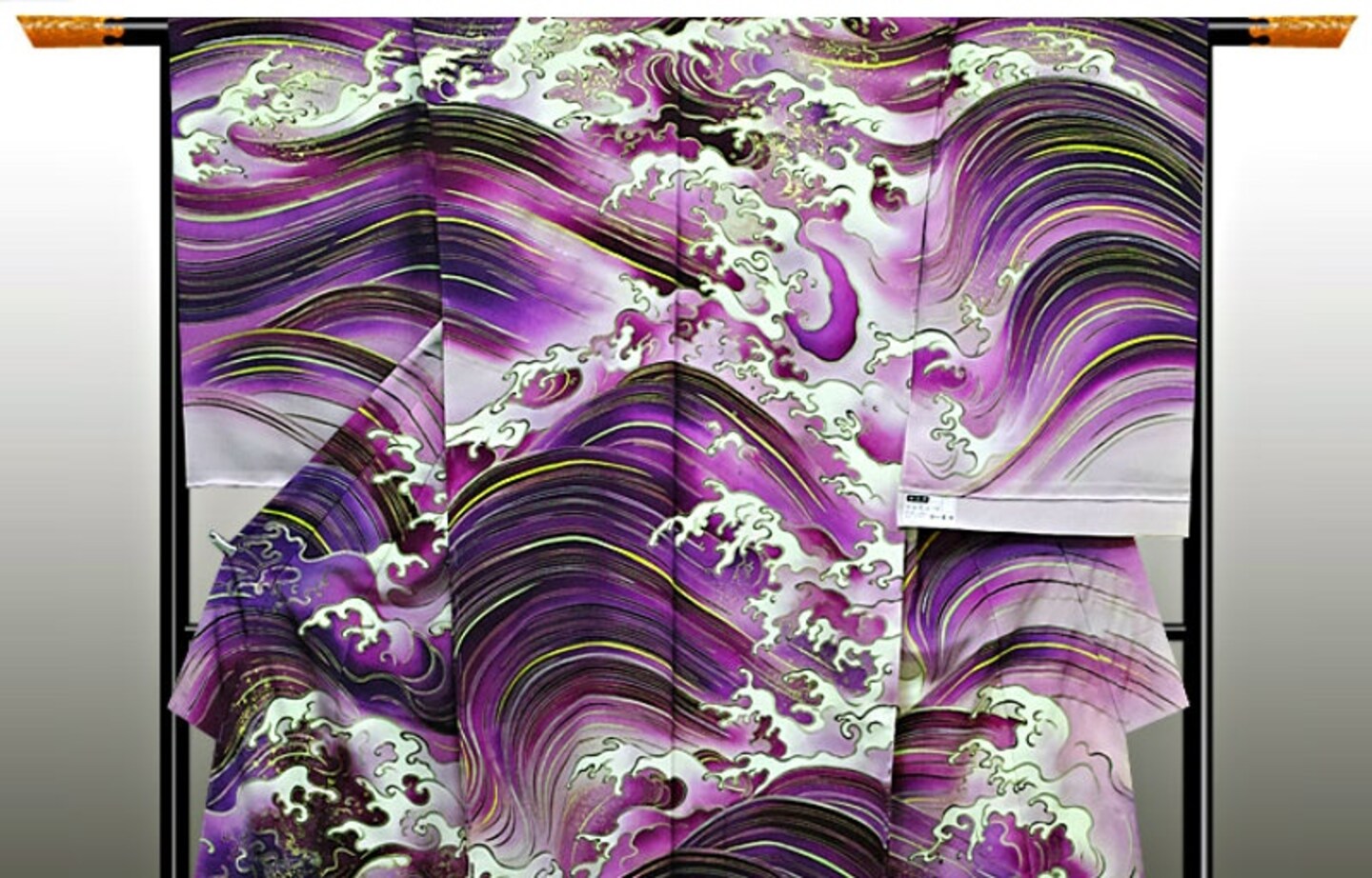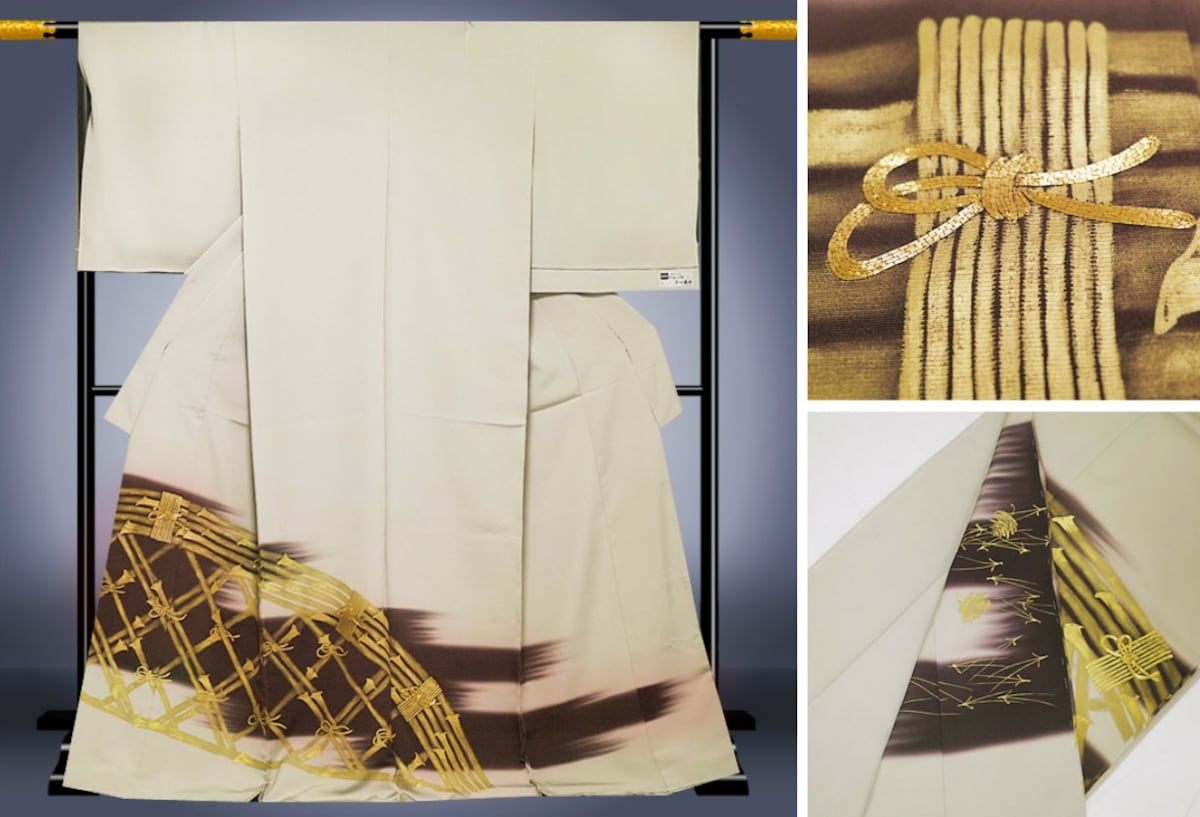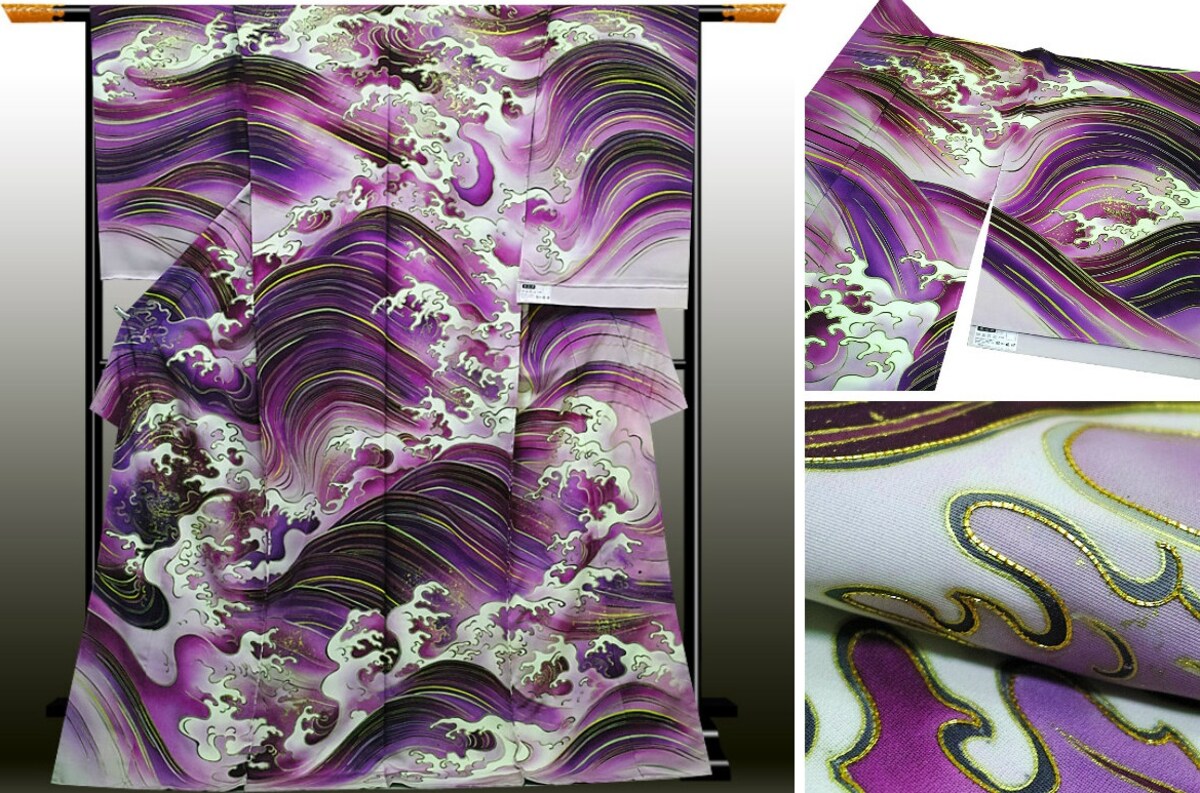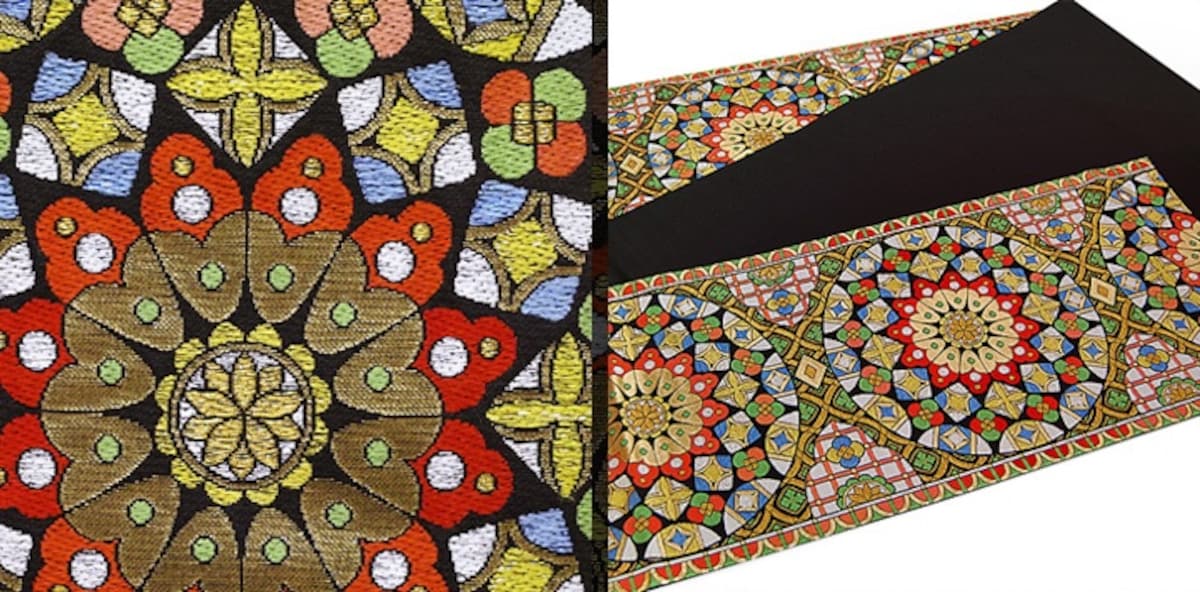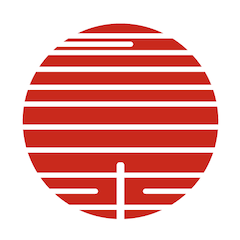How to Get a Quality Kimono Online
Tracing its history as a wholesaler all the way back to 1783, Osaka's Matsukawaya presents a rich selection of both men's and women's kimono, offering quality products at affordable prices—at least, affordable for kimono! The shop has been offering kimono online since 2002, and was named Rakuten's Shop of the Year by 2003. Here's a small sample!
By 100 JAPANKyo Yuzen Kuro-tomesode
A tomesode (留袖, "fastened sleeves") is a formal, short-sleeved kimono traditionally worn by married women. This piece is a kuro-tomesode, where kuro (黒, black) refers to the solid black base on the upper body and arms of the garment. It was produced by Kitagawa kimono house, which carries on the tradition of Kyo yuzen (京友禅), a form of dyeing handed down in the Kyoto area since the eighth century.
Cranes glide across beautiful wisteria, highlighted with vivid gold coloration and embroidery. While Kitagawa is known for its dyeing techniques, it also develops its own original silk fabrics, with this piece made from Japanese silk, Tango chirimen silk crepe and Chul Thai No. 6 Thai-Japanese hybrid silk. The quality silk feels light on the skin, while superior hemming allows for a rich draping effect.
Price: $2,818.15
Kyo Yuzen Iro-tomesode
This piece, also from Kitagawa, is an iro-tomesode, where iro (色, color) refers to a kimono with a solid-colored background and no patterns on the upper half of the body.
The basket emblazoned across the beige base has been created using gold paint and embroidery, giving it a sense of solidity. Made of Japanese silk, Tango chirimen (丹後ちりめん) and Chul Thai No. 6 for a sense of being enveloped in softness. (Tango is a former province that now forms the northern tip of Kyoto Prefecture, while chirimen is a form of silk crepe.)
Price: $3,341.10
Kumotori Kyo Yuzen Furisode
Tailored with long, flowing sleeves, furisode (振袖, literally "wavy sleeves") are traditionally worn by young, unmarried women—most notably on Coming of Age Day on the second Monday of January in the year they turn 20. However, there's no age restriction for furisode, and lately career women have been enjoying wearing them into their late 20s and 30s.
Kumotori (雲取り, literally "cloud-taking") is a classical pattern featuring linking arcs in the shape of repeating clouds, often interspersed or overlaid with images of flowers. This furisode features a rich cloud and plum blossom pattern against a translucent blue background, creating a bright, striking contrast. Featuring a unique design from a specialist dyeing house, this piece is ideal for teenage girls and women up to their 30s.
Price: $7,979.91
'Raging Waves' Homongi
A homongi (訪問着) is literally a formal or semi-formal "visiting kimono." Usually less colorful than a furisode, it will still feature extravagant patterns that run over the seams or even cover the entire garment. A homongi is the showiest form of kimono for married women and unmarried older women (with the latter wearing the sleeves longer). First appearing in the Meiji Period (1868-1912), homongi are often seen at tea ceremonies and weddings, where they display elegance and status.
Here we see the highest-class skill of Kitagawa dyeing. Rough, raging waves (荒波・aranami) splash across the entire garment, with gold embroidery accentuating the dynamic lines of ocean spray, highlighted with brilliant streaks of gold paint. Made of Japanese silk, Tango crepe and Chul Thai No. 6.
Price: $27,464.80
Chartres Koyo Crest Fukuro-obi
A kimono is tied with a sash called an obi (帯). The fukuro-obi (袋帯, "pouch obi") is so named because it is woven like a pouch or bag, made by folding a piece of cloth or sewing two pieces together, typically with a cheaper, lighter material on the inside. Broad and straight, it is the most formal kind of obi in use today, outside of the bulky maru obi (丸帯, "one-piece obi") used at weddings and by some geisha.
This high-grade, patterned obi is from Tatsumura Art Textiles, founded in Osaka in 1894 by Heizo Tatsumura, renowned as a genius in restoring ancient textiles. Inspired by the stained glass of Chartres Cathedral in Paris, the vibrant blue interwoven in this piece aims to replicate the famed Chartres blue created for the cathedral's stained glass windows, taking the form of glittering crests, or koyo-mon (光曜文). Hand-woven, 31 centimeters (12.2 in) wide and 4.5 meters (14.8 ft) long, this is an elegant rokutsu-gara (六通柄)-type obi, with the pattern covering 60 percent of the sash.
Price: $3,341.10


